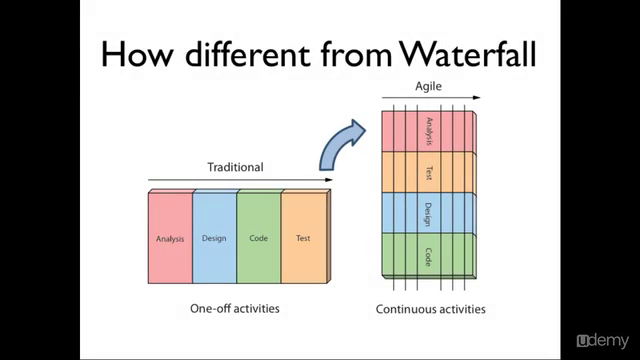The Agile Samurai Bootcamp

Why take this course?
🌟 The Agile Samurai Bootcamp: Master Agile Project Delivery! 🌟
Course Headline:
Everything you need to setup, execute, and successfully deliver your own Agile project.
Introduction:
Get ready to kick some software project butt! 🥋✨ Enter the world of the Agile Samurai, where even the most dire of software projects are dispatched with ease and grace. By learning the ways of the Agile Samurai, you will uncover:
- What is Agile: Learn the ins and outs of this iterative approach to software development.
- Common Myths & Pitfalls: Discover how to navigate through misconceptions and avoid typical Agile traps.
- Choosing the Right Agile Method: Find out which Agile method fits your project like a glove.
- Building a Winning Agile Team: Characteristics of high-performing teams and strategies for recruiting quality players.
- Agile User Stories: Master the art of gathering requirements efficiently and engagingly.
- Weekly Deliverables: Commit to delivering value every week without fail.
- Dealing with Schedule Issues: Learn how to correct course when the project timeline goes sideways, all while looking like a pro.
- Agile Engineering Practices: Dive into the four essential practices that are the backbone of effective Agility.
Course Outline:
Agile In a Nutshell
- What Agile is and how it works.
- How to choose the right Agile method for you.
Agile Teams
- The secrets to a successful Agile team dynamic.
- Finding and fostering top Agile talent.
User Stories
- Crafting user stories that are clear, concise, and compelling.
- Hosting effective story gathering workshops.
Estimation
- Master the art of estimation to set realistic plans and expectations.
Planning
- Learn how to create a plan you and your customer can believe in and stand by.
Iteration Mechanics
- Setting up iterations for success and maintaining an agile communication plan.
Visible Workspaces
- Creating a workspace that provides clarity, focus, and direction.
Engineering Practices
- The cornerstone engineering practices of Agile:
- Unit Testing: Ensuring your software works as expected.
- Refactoring: Paying down technical debt while continuously improving your design.
- Test-Driven Development (TDD): Writing tests first to guide design decisions.
- Continuous Integration (CI): Keeping your codebase ready for production at a moment's notice.
Intended Audience:
This is an introductory level course on Agile software delivery, perfect for:
- Beginners eager to learn the fundamentals of Agile project management.
- Experienced practitioners seeking to solidify their understanding and refine their skills.
Course Requirements:
No previous experience with Agile is expected or necessary. Whether you're a developer, project manager, or product owner, this course is designed for learners at all levels. 🎓
Instructional Level:
All Levels - From novice to guru, there's something in this course for everyone.
Updates:
- FAQ Section (April 2017): A new section answering most commonly asked questions.
- Templates Section (August 2018): Downloadable examples of burn down charts and other Agile tools to help you track progress.
New Cheat Sheet Section (August 2018)
A concise, downloadable PDF summarizing the key concepts covered in the course for quick reference.
Testimonials:
"One of the best introduction on Agile concepts. Not only for beginners but also the experienced agile practitioners will benefit from this course." - Satisfied Learner
Embark on your Agile journey and become a certified Agile Samurai! 🏔️💪 Join us in this comprehensive, hands-on training that will transform the way you approach software development. Let's conquer those projects together! 🚀🌟
Course Gallery




Loading charts...
Comidoc Review
Our Verdict
The Agile Samurai Bootcamp proves to be a valuable and worthwhile endeavor, despite minor inconsistencies and pacing concerns. Its extensive exploration of various facets of Agile methodologies makes it an insightful and engaging resource for both novice and experienced professionals seeking to deepen their understanding or apply Agile practices beyond traditional software development contexts.
What We Liked
- Comprehensive coverage of Agile methodologies, including User stories, Estimation, Planning, and Team formation
- In-depth discussion on roles, Visual Workspaces, Communication Plans, and Iteration mechanics
- Addresses important concepts not typically covered in other Agile courses like production readiness and software engineering best practices
- Clearly presented material with a variety of real-world examples
Potential Drawbacks
- Presentation style may be too slow-paced for some learners, particularly those seeking written reference materials alongside voiceovers
- Lacks emphasis on Agile applicability outside of traditional software development contexts
- Minor issues with consistency and proofreading in slide presentations
- Could benefit from clearer identification of non-software-development-specific content for certain professionals